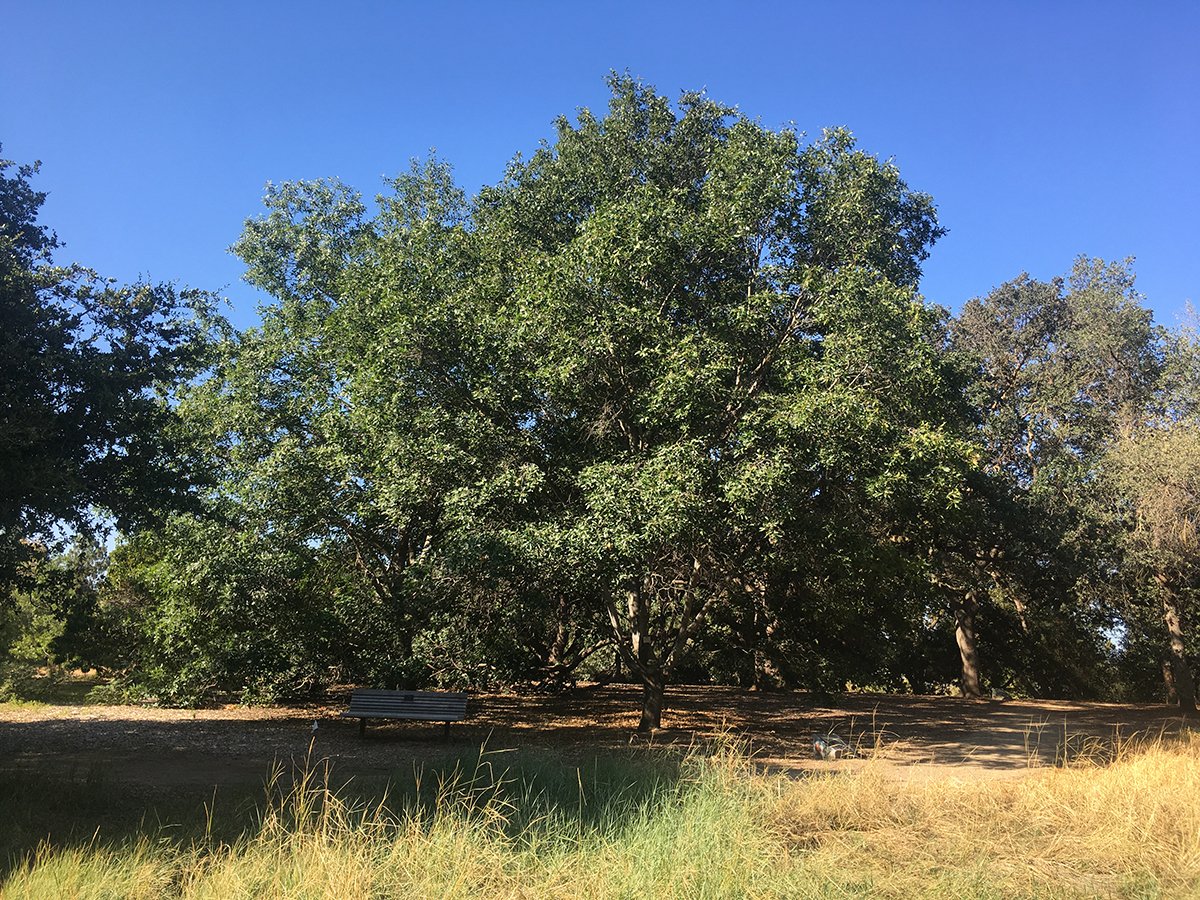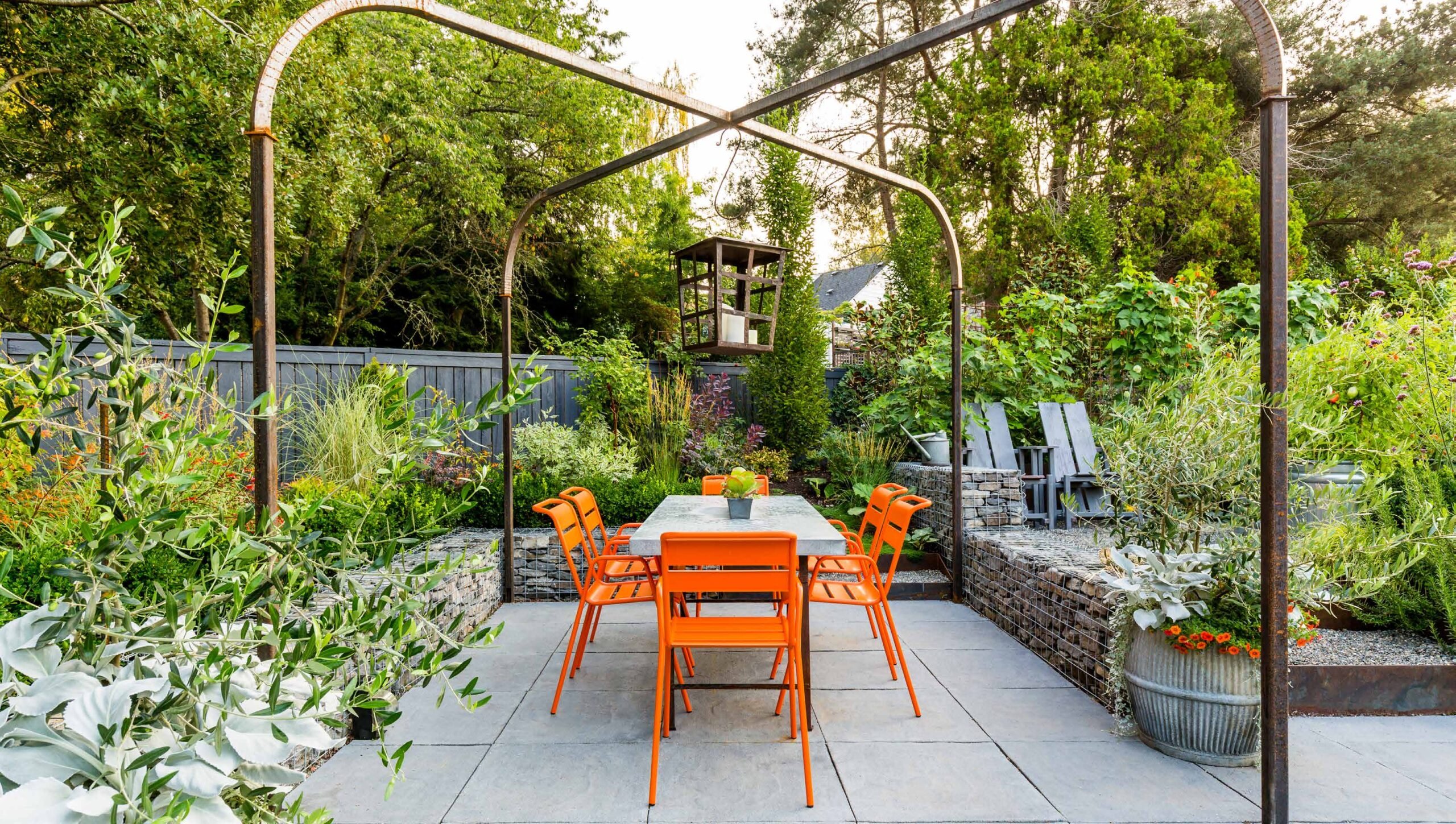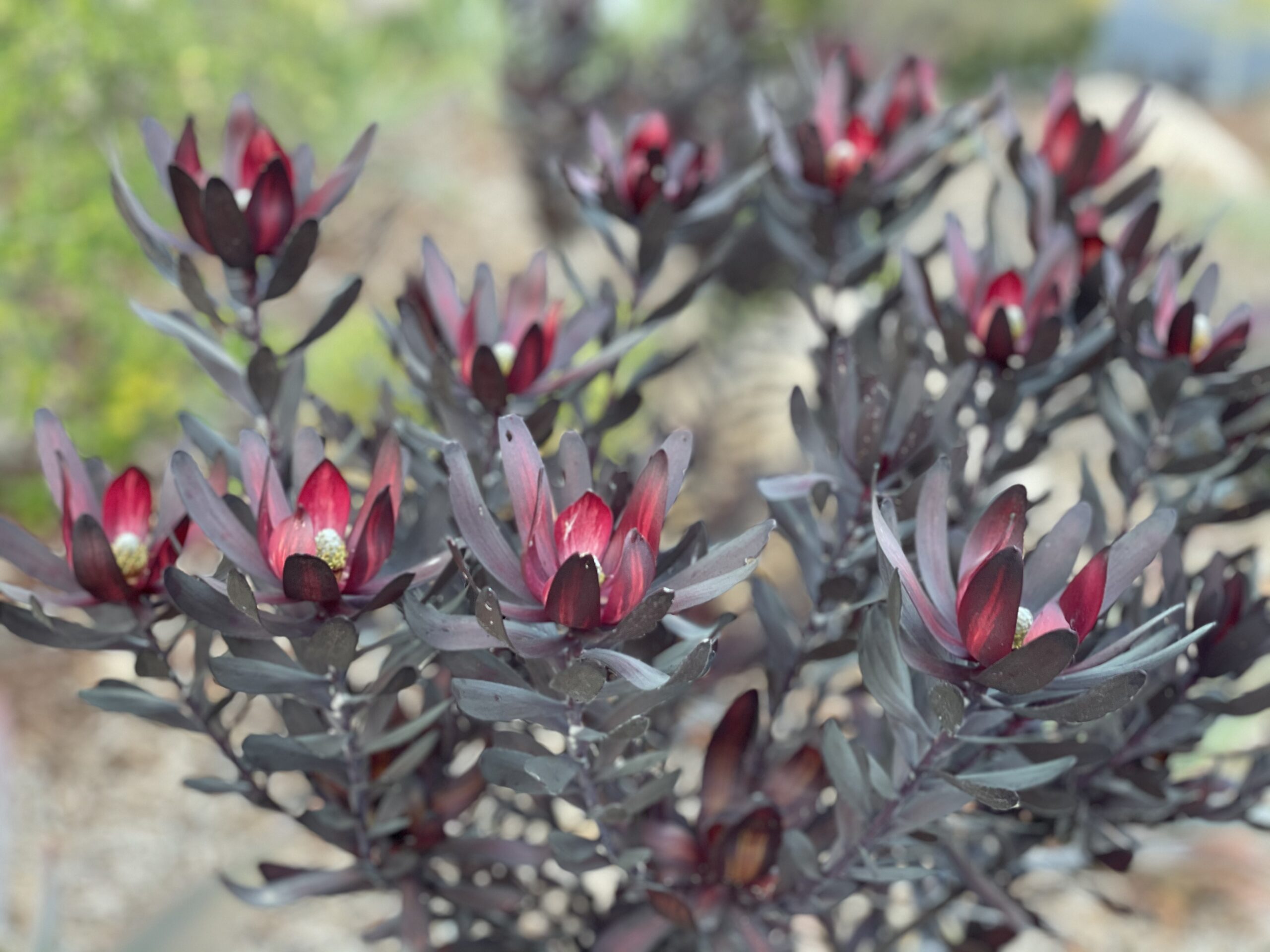
Pacific Plant People: Oak Corridors Plant Recommendations

Contributor
- Topics: Plants You Need
Emily Griswold is Director of GATEways Horticulture and Teaching Gardens at the UC Davis Arboretum and Public Garden (APG), University of California, Davis. She leads the GATEways Project (Gardens, Art and the Environment), an initiative to engage visitors with the academic work of UC Davis through the creation of innovative gardens and outdoor programs in partnership campus departments. Emily was interviewed by Saxon Holt and this article is a result of their conversation.
Watch the video excerpt of the Pacific Plant People interview here.

Right: Chisos red oak (Quercus gravesii) leaves and acorn. Credit: Emily Griswold
Davis Central Park Gardens: involvement in community
At the heart of downtown Davis resides the Davis Central Park, offering picnic facilities, fields, play areas, farmers markets, and festivals. While the original design included space for growing roses and ornamental plants, the lack of funding and community support led to the area becoming neglected.
Emily became involved in this city project while accompanying her husband to weekly Scrabble matches at the park. “I guess this volunteer project was born out of not wanting to play Scrabble, and I found myself sitting there, looking at this neglected garden space along the edge of the park and I thought to myself, I should fix that up, and it wouldn’t be that hard, famous last words!”

Under her leadership, the project became a partnership between the UC Davis Arboretum and Public Garden (APG), UC Division of Agriculture and Natural Resources Master Gardeners, the City of Davis, the Davis Farmers Market Foundation and the Davis Garden Club. The half-acre area contains a variety of themed areas. Plants include many natives and also many of the UC Davis Arboretum All-Stars to create a demonstration garden with easy and tough plants well-adapted to the valley climate.
The unique Central Valley climate
Davis is located just west of Sacramento and the climate is more extreme than California coastal climates. Summers are hotter, with clear skies and triple digits the norm in July and August and winters are colder with frosts. But lately predicable patterns appear to be changing. “Before, an extreme low temperature might be 14°F but now it only reaches the upper 20s. We can now get away with more kinds of plants and the plant palette is shifting so we can get away with less hardy things.” However, she cautions against planting frost-sensitive trees. “I’m okay with taking risks with smaller plants but would not have tender plants be the majority of a landscape.”

Right: Lacey oak (Quercus laceyi) leaves and acorns in Texas. Credit: Emily Griswold
The Shields Oak Collection: selecting for resilience
California native oaks are under stress not only from warming climate but also from dropping water tables and continuing drought. Emily studies the collection and growing of western oaks. “With climate change, lots of ecological changes are predicted to occur and perhaps the oaks won’t be able to grow where they do now, but they may grow at higher elevation where conifers currently grow.” She explained that oaks’ readiness to hybridize may put them at an advantage. “Related trees may easily hybridize and result in mixing of different characteristics, including heat and drought tolerance.”
One of the plant collections that Emily has been responsible for developing at the UC Davis Arboretum and Public Garden is Peter J. Shields Oak Grove. This nationally accredited collection is part of the national oak collection.
The region has high oak diversity, with Mexico, Texas, and California being home to roughly 160, 50, and 20 species respectively. In a study of climate ready trees, retired U.S. Forest Service researcher Dr. Greg McPherson identified drought and heat tolerant trees with some Texas oak species are among them. “We are looking to Arizona and Texas, and Texas is a really interesting spot of mixing of different species,” Emily said.
In the face of climate change, researchers must weigh the importance of local native oaks for ecosystem services against the practices of bringing in related plants from other areas, a practice referred to as assisted migration. If our oaks cannot adapt to climate change, Emily suggests “looking at the closest species to us and looking south and not so much east. Start with what are the closest places to get viable things.”
As an example, the valley oak (Quercus lobata) is an iconic keystone species in California, but it could be that the best adapted individuals for the future will be found at the southern end of the species range.

Right: Lacey oak (Quercus laceyi). Credit: UC Davis Arboretum and Public Garden
- Chisos red oak (Quercus gravesii), native to Big Bend National Park and the Chisos Mountains, “has a smaller stature, 30–40 feet tall, and is a red oak with long narrow leaves. It is almost birch-like, and very graceful.”
- Lacey oak (Quercus laceyi) is a white oak, with blue-green leaves with rounded lobes. “It is also a smaller species from limestone soils on the Edwards Plateau, and stays under 30 feet,” she said. “From an area with some summer rain, it is desirable as an urban species that tolerates summer moisture, and it is being tested as a parking lot tree on the UC Davis campus.”
More plants for a summer-dry climate
The UC Davis Arboretum has a large collection of plants from around the world. One group of plants that are well adapted to the hot, dry summers are the summer-dormant bulbs from other summer-dry areas of the world. Foliage of these plants appears with cooler temperatures and winter rain and then goes dormant in summer when water is scarce. They bloom before foliage emergence, in late summer and early fall.

Center: Sea squill (Drimia maritima). Credit: Emily Griswold
Right: Spoon Yucca (Dasylirion wheeleri). Credit: Ellen Zagory
- Oxblood lily (Rhodophiala bifida) increases its clump over time and will spread its bloom over a number of weeks in early fall. “These fall-blooming bulbs are so great at the end of a long and hot summer, a time in the Central Valley when you’ve endured this long, dry heat spell and both the gardeners and plants are feeling tired and a bit bedraggled. These bulbs are a moment of inspiration, rain will come back, life will emerge again,” Emily said.
- Sea squill (Drimia maritima) makes tall towers of white in the late summer. Native to the Mediterranean region, they reach to six feet tall and “leaves are very attractive, very wide and have an undulating form.“
- Ripple agave (Agave ‘Mr Ripple’) is the highlight of the neighborhood when in bloom. Emily waters sparingly at home, if at all, and her home garden must survive periods of neglect when she is busy.
- Spoon yucca (Dasylirion wheeleri) is an Arboretum All-Star and a plant Emily likes because of its spikey, sculptural shape.
Changing climate, changing garden styles
In the face of ongoing droughts and even a “megadrought,” we are being forced to cut back on our watering.
“For a long time, California gardeners have been in climate denial because water was available cheaply and there has been a culture of ‘just add water’ and you can grow all these wonderful things. This drought shows we need to get our gardens in line with water supply and values,” Emily said.
The tree canopies of cities in many areas are in decline in the face of long drought and our tree palette will need to change. “UC Davis has a long history of using redwood trees, but with drought they are failing rapidly,” she said. Lack of rain resulting in dry subsoils presents more stress than these coastal species can tolerate.
In general, watering “less frequently but more deeply” to saturate the soil and draw root growth away from the surface will produce plantings able to harvest soil moisture to a greater depth and make them more resilient to stress.
We need gardens to make our cities livable but we must learn how to create them in support of wild creatures while being resource efficient and making optimal use of our limited water supplies. Gardens create beautiful places for us to renew our spirits, to grow our food, and live in harmony with where we are.
Resources
Emily recommends several online resources for the home gardener. For information on California native plants, see Calscape. She also referenced the US Forest Service’s research on climate ready trees and the UC Davis Landscape Plant Irrigation Trials
When calculating local best practices for irrigation, she recommends using both the Water Use Classification of Landscape Species and California Irrigation Management Information System to calculate how much water your landscape needs based on evapotranspiration rates.
The UC Davis Arboretum and Public Garden offers several public projects, including the Gateways Project, Learning by Leading, and Arboretum All Stars.
Share:
Social Media
Garden Futurist Podcast
Most Popular
Videos
Topics
Related Posts

Design Futurist Award Announced: Committee Shares Vision
March 8, 2023 At Pacific Horticulture, we believe that beauty can be defined not only by gorgeous plants and design, but also by how gardens

Ground Up Science for Greener Cities with Garden Futurist Dr. Alessandro Ossola
Spring 2023 Listen to the Podcast here. Alessandro Ossola is a scientist who gets very excited about the challenge of climate change allowing for an

Readying Urban Forests for Climate Realities with Garden Futurist Dr. Greg McPherson
Winter 2023 Listen to the Podcast here. “Going from the mow and blow to a more horticulturally knowledgeable approach to maintaining the landscape. And that

Expand Your Palette: Waterwise Plants for your Landscape
There’s nothing more thrilling to plant lovers than discovering new plants to test in the garden. Here in the southernmost corner of California, we have









Responses